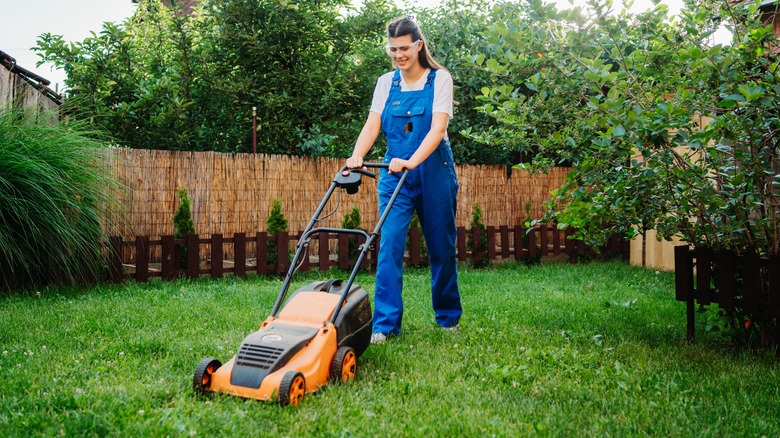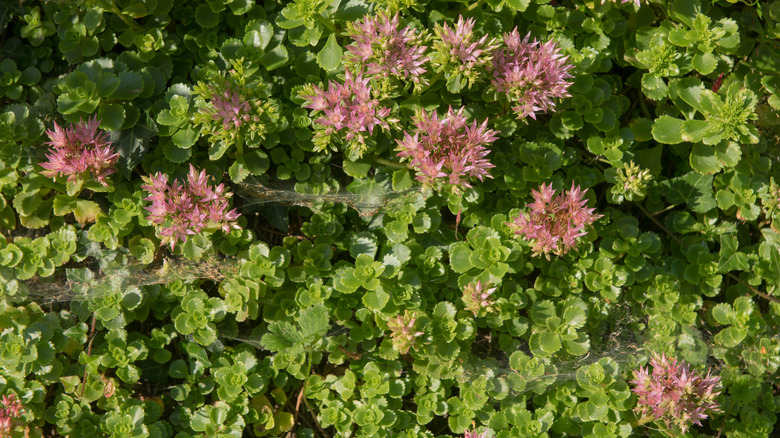Give Your Yard A Colorful Upgrade With This Eye-Catching Grass Alternative
As gardeners, spotting artificial turf in a neighbor's yard can feel offensive. The uniform blades of grass and the perfect shade of green look anything but natural. But if you think about the effort that real grass requires, the fake alternative makes sense. You would no longer need to water it, pick through the grass to pull weeds, or think about mowing your lawn in the spring. However, if both fake grass and extensive lawn maintenance don't appeal to you, there is another option — one that is easy to care for and provides interesting texture and year-round color.
With as many as 400 species available, sedum, also known as stonecrop, is a low-maintenance succulent that can be used as an alternative for grass. You know those crannies near rockeries or uneven slopes that you always dread mowing? Sedum is perfect for those problem areas. It sprawls close to the ground, spreading into tight spots. In fact, its name comes from the Latin word "sedeo," which means "to sit," accurately describing the plant's low-growing habit. Sedum is also ideal for hilly areas because its dense growing habit and extensive root system help prevent erosion. The thick carpet-like formation also leaves little room for weeds to take hold.
The best location for sedum is one that gets full sun exposure. Often used in xeriscape design ideas, sedum tolerates heat and drought and abhors wet, consistently shady conditions. It grows best in soils that contain sand and gravel for proper drainage. An added bonus: many sedums produce flowers — a perk that lawns don't offer — that bring pollinators to your yard, benefitting your garden's ecosystem.
Finding the right sedum to replace your lawn
There are many types of sedum that can serve as an alternative to grass, so making the change from lawn to succulent can feel overwhelming. When whittling down your options, remember that while some varieties are more tolerable of foot traffic than others, none are meant to withstand the same amount of trampling as grass. That said, choose sedum for areas that will be lightly traversed. Also, look for one that is low-growing, as some can stretch as high as 2 feet.
One of the more durable varieties is Sedum spurium 'John Creech' – ideal for USDA Hardiness Zones 3 through 8 and tolerant of poor (but well-drained) soil conditions and some shade. This sedum grows in tight rosettes with rounded, flat leaves. The plant maxes out at 2 inches high, spreading like a mat across the ground. Its leaves are green in the summer and take on dark red hues in the fall and winter. In late spring to mid-summer, look out for tiny pinkish-red flowers that will bring butterflies to your garden.
Sedum acre 'Oktoberfest' is another variety that works well as a lawn alternative. Once it's fully established, this ground cover can tolerate occasional foot traffic. It's fast-growing and, like most sedums, can be propagated quickly and easily — simply pinch off the top few inches of an existing stem and replant the cutting. 'Oktoberfest,' also hardy to zones 4 through 9, forms a carpet-like cover made up of miniature lime-green columns with white star-shaped summertime blooms that look like beer foam (hence the plant's name).

